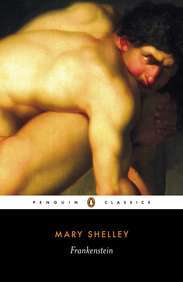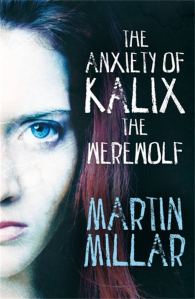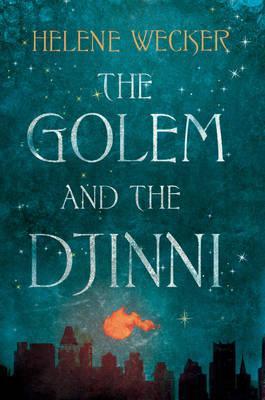I’ve only read one piece of fiction, if memory serves, about a Mummy. Interestingly, it was called The Mummy, and it wasn’t very good. By Jane Loudon, it was originally published in 1827, and set in the future, which is at odds with many concepts of the Mummy as a horror icon. I mention this only in passing as momentum starts to build towards to the new Universal Monster share universe. I’m a huge fan of some of the original Universal movies, especially Frankenstein (1931) and Bride of Frankenstein (1935) (which of course, as everyone knows, should be called Bride of the Monster), and the later Creature from the Black Lagoon (1954) – sadly I’ve never read a book featuring a gill-man.
 So, as news trickles through of these films, I got to thinking about what were my favourite monsters in literature – the classical kind, that is. So here I present, the forgottengeek guide to monsters that I’ve read. So not at all comprehensive then!
So, as news trickles through of these films, I got to thinking about what were my favourite monsters in literature – the classical kind, that is. So here I present, the forgottengeek guide to monsters that I’ve read. So not at all comprehensive then!
We will start, naturally, with one of my all-time favourite books and winner in the category of man-made monster. Not much more can be said about Mary Shelley’s Frankenstein (1818). My original review is here. What many people don’t realise (those fools that haven’t read it), is that much of the classic cinematic imagery of the good doctor in his laboratory building the creature isn’t at all in the book. The monster is a fairly sympathetic character until his encounters with people make him a monster.
We, as a species, are good at making monsters. In fiction at least. There are supernatural and there are man-made zombies. My recommendation for the latter type is Feed (2010) by Mira Grant. The first book in her ‘Newsflesh’ books, the zombies Grant creates are a result of the mixing of two initially beneficial viruses. Set in the future, the story of the apocalypse and how it came about is told via media-savvy bloggers. The zombies themselves are fairly peripheral characters – attacks are rare. As in the best horror, the humans are worse monsters…Plus it has a character called Buffy! What’s not to love.
 I’ve said it before and I’m sure I’ll say it again, but there is no better depiction of the werewolf than Kalix and her clan in Martin Millar’s Lonely Werewolf Girl (2007) and sequels. Kalix is a loner but is surrounded by an absolute menagerie of colourful characters. Millar’s imagination and skill as an author are formidable, and Kalix is a werewolf everyone should spend time with. There is plenty of horror in this series as well. Werewolves, hunters and others regularly destroy each other. Kalix is a lot more complex that you might think. She’s not just a miserable teen goth, but a unique and special person trying to understand her place in the world.
I’ve said it before and I’m sure I’ll say it again, but there is no better depiction of the werewolf than Kalix and her clan in Martin Millar’s Lonely Werewolf Girl (2007) and sequels. Kalix is a loner but is surrounded by an absolute menagerie of colourful characters. Millar’s imagination and skill as an author are formidable, and Kalix is a werewolf everyone should spend time with. There is plenty of horror in this series as well. Werewolves, hunters and others regularly destroy each other. Kalix is a lot more complex that you might think. She’s not just a miserable teen goth, but a unique and special person trying to understand her place in the world.
Again, there are elements of both horror and humanity in Sunshine (2003) by Robin McKinley. This novel is my favourite vampire book and features the enigmatic Constantine as the vampire who comes to find a connection with Sunshine; a baker and magician who narrates this tale. There is an ethereal darkness and a surreal brightness to Sunshine that might be seen as an exemplar for vampire tales. Constantine can be interpreted as a sympathetic vampire – a bit like Angel in Buffy the Vampire Slayer perhaps? But that’s how the reader can relate, and how Sunshine becomes his friend. And by the way, Stoker’s Dracula (1897) is boring!
 I’ve only read one work of fiction featuring a Golem/Gollum. I talked about Helene Wecker’s The Golem and The Djinni (2014) before over here. Of course it also features a djinni, another classic horror monster. There is little horror here at all; only fear of loneliness and of being a migrant in a strange city. Like Kalix, both the golem and the djinni are finding their way in a strange world. Wecker’s depiction of the golem having to hide its inherent golem-ness even though it would mean an easier life is poignant. The djinni is a creative character who again must come to terms with being different.
I’ve only read one work of fiction featuring a Golem/Gollum. I talked about Helene Wecker’s The Golem and The Djinni (2014) before over here. Of course it also features a djinni, another classic horror monster. There is little horror here at all; only fear of loneliness and of being a migrant in a strange city. Like Kalix, both the golem and the djinni are finding their way in a strange world. Wecker’s depiction of the golem having to hide its inherent golem-ness even though it would mean an easier life is poignant. The djinni is a creative character who again must come to terms with being different.
Are ghosts monsters? Any more than a golem, for example? In The Haunting Of Hill House (1959) by Shirley Jackson, you might ask, are there even ghosts? Is the house itself evil and malevolent? Too many questions. What I love about Jackson’s short novel is that the tension and creepiness is palpable. Whether or not Eleanor is being haunted by a ghost, a house, or whether it’s all in her mind are irrelevant. It is the power of Jackson’s writing that sends shivers down your spine and means you sleep with the lights on.
Again, I’ve not read too many books with a witch as a monster but Hex (2015) by Thomas Olde Heuvelt stands out. The witch in this Kingian tale of small town America is a human creation – a woman persecuted back in the day, and now taunted by bored teens. Like many of the monsters here, you side with her at times, or at least understand her motivations. Humans are the bad guys once more. Olde Heuvelt’s writing is enjoyable. A proper horror page-turner in tune with the modern age. As all good horror fiction should be.
Monsters of a less tangible nature that get the nod in this list are The Stand (1990) by Stephen King, of course. Man makes the plague that wipes out most of humanity, and evil comes to town in the undefinable presence of Randall Flagg. A demon, a man, an evil wizard, or something else? Perhaps a little like Jackson’s The Haunting Of Hill House, and Steven King’s The Shining (1980) – ok, a hotel but still a building – it is the house itself (maybe) that is the monster in Mark Z Danielewski’s remarkable House of Leaves (2000). Hard to describe, it is a work of metafictional genius that creeps the hell out of me! Read it. A nod of course must go to another Universal monster, the classic The Strange Case of Dr. Jekyll and Mr. Hyde (1886) by Robert Louis Stevenson. It is much weirder than you might imagine and although short, highlights the inner struggle between good and evil, and the external struggle between classes in Victorian Britain.
Interest in horror has always been high and there appears to be a resurgence of interest in the classics. Read these books as a starting point, then go and explore.
Ripley: “You know, Burke, I don’t know which species is worse. You don’t see them fucking each other over for a goddamn percentage”. Aliens (1986).
I must read Cabal (1988) by Clive Barker at some point – Midian sounds like a fun place!